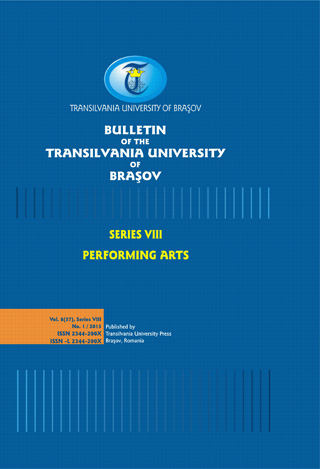General and particular features of the traditional dances in Dâmboviţa county
General and particular features of the traditional dances in Dâmboviţa county
Author(s): Constantina BoghiciSubject(s): Music
Published by: Editura Universitatii Transilvania din Brasov
Keywords: dance; music; rhythm; choreography; role
Summary/Abstract: The wealth, diversity and beauty of the Romanian folklore are richly represented by a very spectacular and various genre, such as the traditional dance. Its syncretism (music, choreography, rhythm, extempore songs, clapping of the hands / stamping of the feet) makes the Romanian traditional dance one of the most beloved genres, both in the country and worldwide. While originally the dance had a major role, the social development and progress have gradually changed the initial destination of some dances (căluş, cununa), into one of entertainment, of fun. Though unevenly disseminated in its area of circulation, the Romanian traditional dance has generally preserved the same musical features: a construction in fixed cycles, a variety of rhythms, the correlation between melody and steps and extempore songs etc. The songs sung by peasants, accompanied by traditional instruments, are characterized by stylistic unity, archaic musical scales, motif structure (in general), motor and rhythm combinations, a simple melodic line enriched with accents on the unaccented beats or on quarter notes. The most frequent dances of Wallachia (and of Dâmboviţa County) are: hora, sârba, brâu, breaza, ciuleandra, căluş etc., which sometimes have local names (sârba cu cap and coadă, Hora ceasului, Floricica, Hora Nunţii, Sârba dogarilor etc.).
Journal: Bulletin of the Transilvania University of Braşov, Series VIII: Performing Arts
- Issue Year: 8/2015
- Issue No: 1
- Page Range: 23-30
- Page Count: 8

